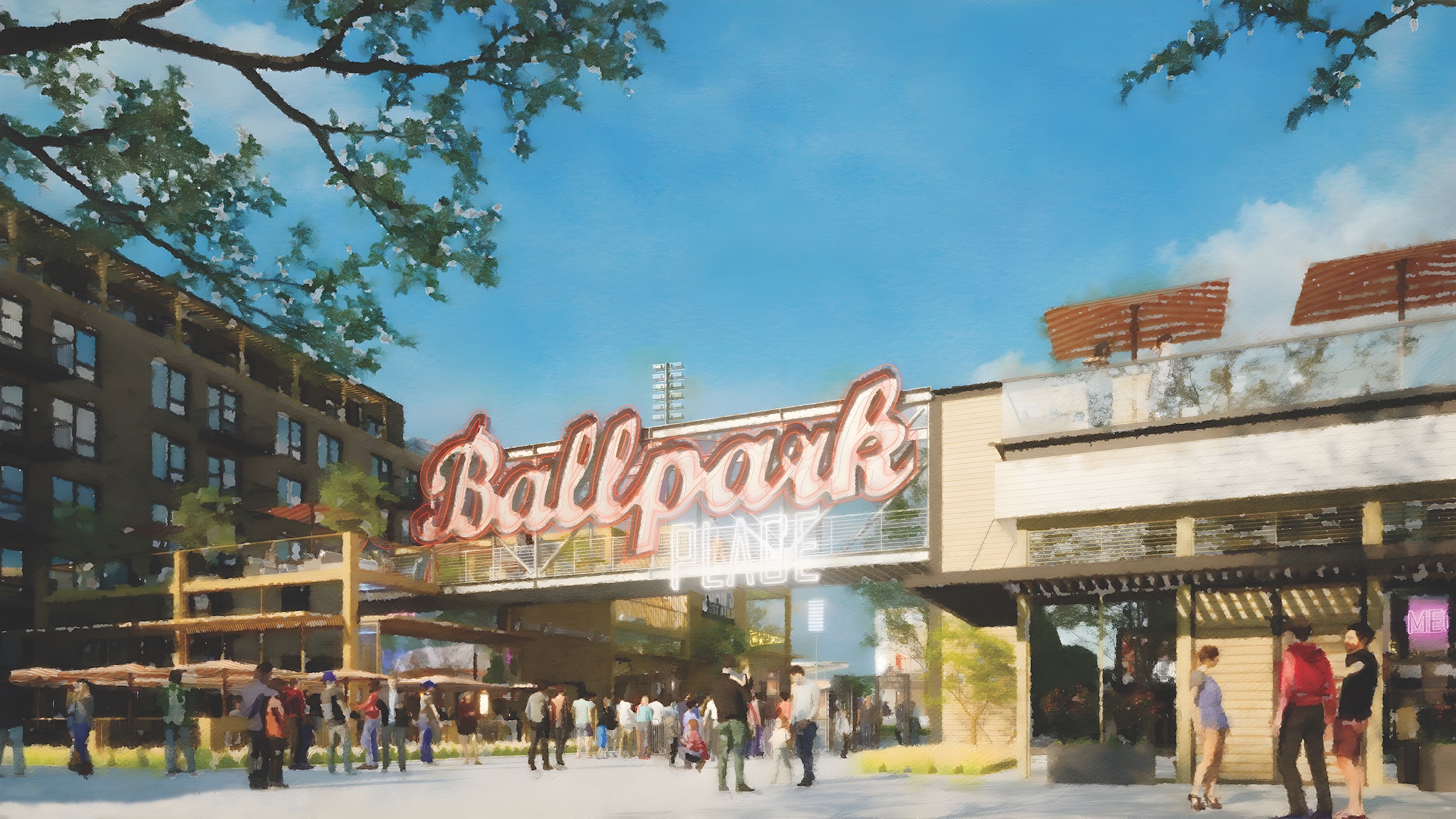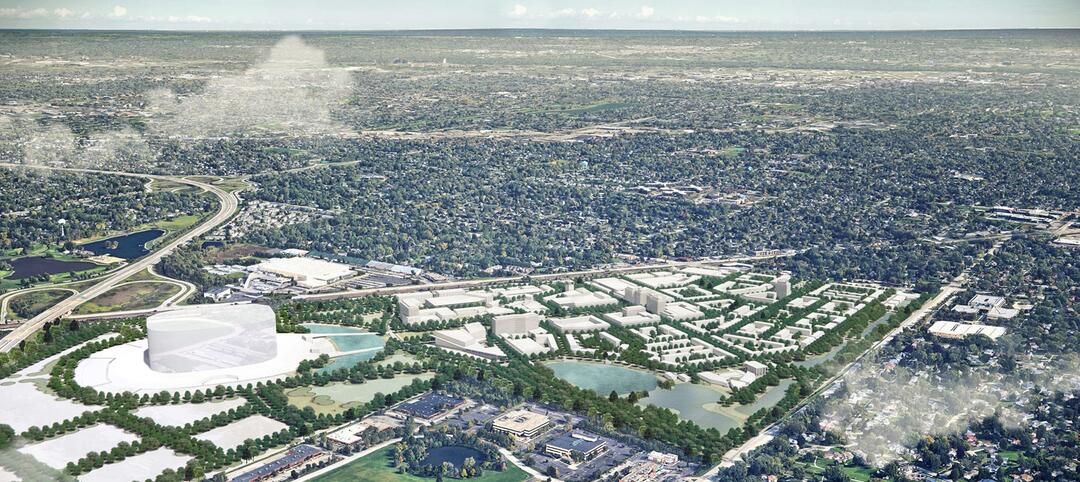Since its construction began two decades ago, Daybreak, the 4,100-acre master-planned community in South Jordan, Utah, has been a catalyst and model for regional growth. The community is now home to more than 30,000 residents living in 9,300-plus houses. Construction of another 10,000 houses is planned through 2036, over which period the community’s population is projected to increase to at least 50,000. The community is also projected to have more than nine million sf of leasable commercial space by 2036.
Daybreak continues to be a “release valve” for the entire Salt Lake Valley, said Brad Holmes, President of Larry H. Miller Real Estate, a development firm that, in April 2021, purchased 1,300 acres of undeveloped land within the community. Last October, the developer broke ground on the first phase of Downtown Daybreak, a 200-acre mixed-use entertainment district that will serve as a walkable and bikeable neighborhood within the community, anchored by a minor-league baseball park and a cinema/entertainment complex.
RELATED ARTICLES:
- 12 U.S. markets where entertainment districts are under consideration or construction
- Entertainment districts are no longer just about sports, dining, and music
For over two years, Larry H. Miller Real Estate worked with a design team that included MVE + Partners to create the master plan for Downtown Daybreak. Tim Beuchat, Sr., an Associate Partner at MVE + Partners, declined to comment further about the project except to say that his firm was in construction documents for the neighborhood’s first two mixed-use buildings that will encompass residential apartments, retail, and district parking structures. Stephen James, the developer’s Chief Visionary Officer, did not respond to questions sent by BD+C.
According to Downtown Daybreak’s website, the district’s first phase will include 75,000 sf of retail and food and beverage space, 100,000 sf of office space, more than 300 residential units, parks and outdoor recreation that includes an ice-skating rink, an outdoor amphitheater and stage, and a third light-rail station for the TRAX Red Line.
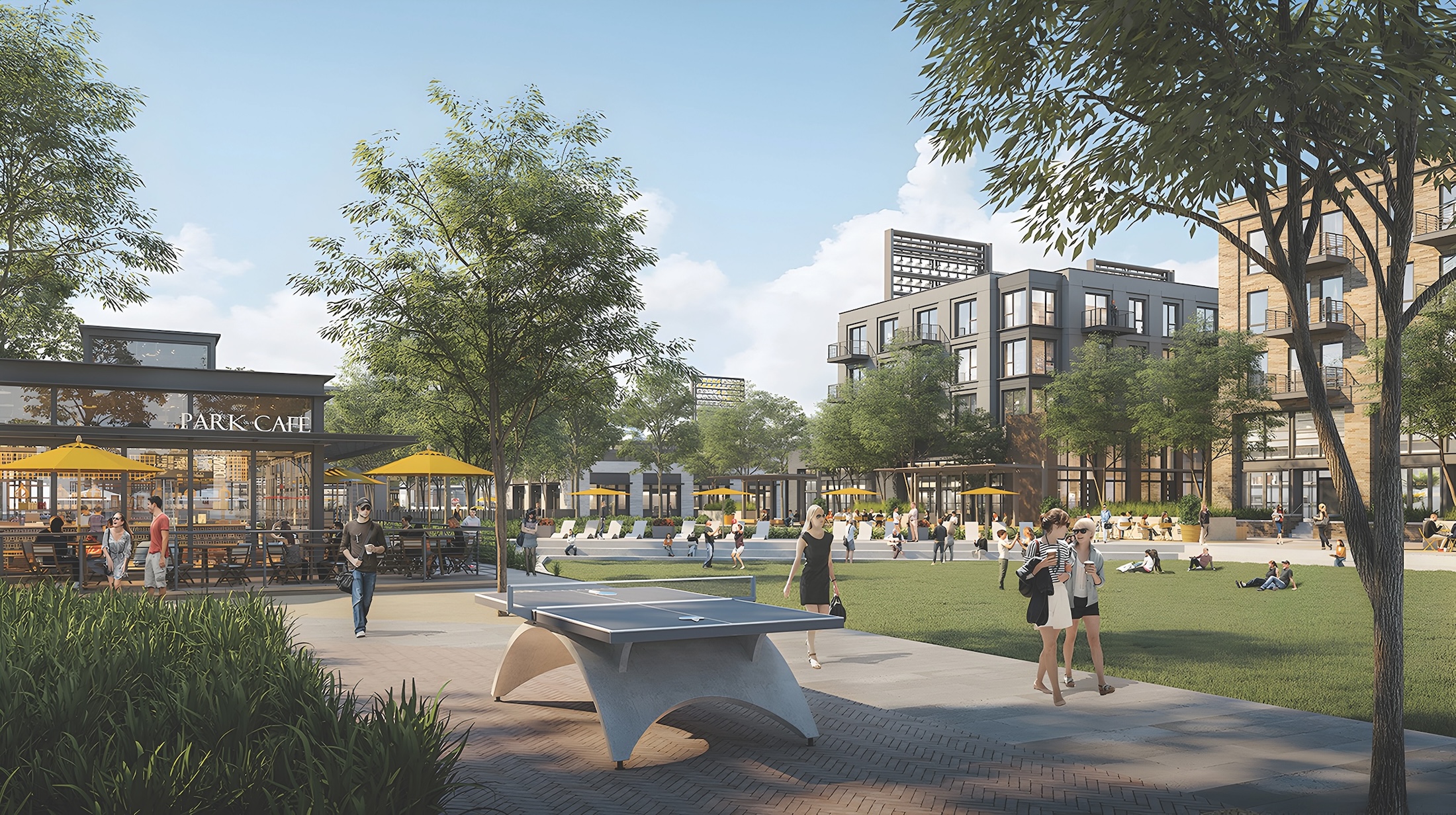
It appears that the housing being built for Downtown Daybreak will be mostly multifamily. One builder, Sego Homes, is promoting townhouses from its Sky Terrace Collection that range from 1,449 to 2,491 sf in size, and from $454,900 to $597,000 in price. Another builder, Holmes Homes, is offering nine floorplans from its Tempo Condominiums brand, ranging from $355,900 to $419,900 in price, and from 1,092 to 1,329 sf in size.
Sports and entertainment anchors
Currently, the Salt Lake Bees, a Triple-A baseball team affiliated with the Los Angeles Angels, plays at Smith’s Ballpark, a stadium with a 14,354-seat capacity. On opening day in 2025, the team—which Larry H. Miller Company owns—expects to move into its new home, a 7,500-seat ballpark in the heart of Downtown Daybreak. The privately funded stadium will offer a range of ticket options, from open-lawn seating to luxury boxes.
According to Ballparkdigest.com, the partners on the stadium’s construction, along with MVE + Partners and Larry H. Miller Real Estate, are Okland Construction, TallyCM, HOK, Urban Design Associates, Atlas Architects, and Loci Landscape Architects. America First Credit Union is Downtown Daybreak’s naming rights partner, and the downtown’s plaza will be called America First Square. (At presstime, the name of the stadium had not been disclosed.)
Downtown Daybreak’s other anchor, which Larry H. Miller Real Estate is building, is a megaplex entertainment center that will have between eight and 10 movie screens with luxury seating, 16 to 20 bowling lanes with lane-side dining, arcade games, a sports-themed lounge with access to an in-house chef and a scratch kitchen serving food made from fresh ingredients, and spaces for private dining, parties, and events.
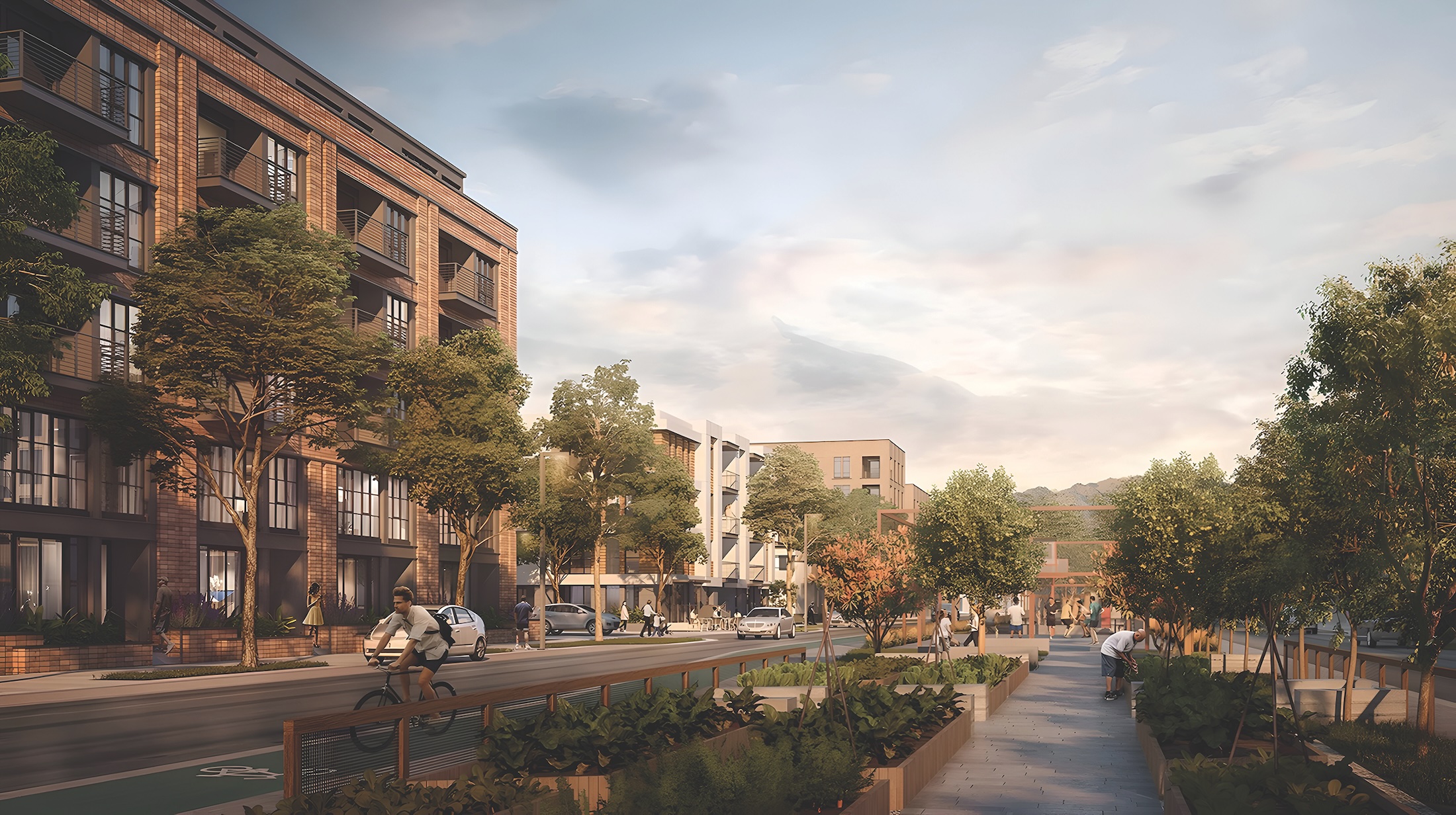
Downtown Daybreak is projected to take 15 years to build out, with much of Phase 1 scheduled for completion next year. (The construction cost of this project has not been disclosed.) The district will be a 25-minute drive from Salt Lake City’s airport. It will also be near the University of Utah’s South Jordan Health Center, two other light-rail stations, two miles of Mountain View Corridor frontage, and 50-plus walking trails.
South Jordan’s Mayor, Dawn Ramsey, sees Downtown Daybreak as a “regional destination” with opportunities to create synergies. The new district “will rebalance the entire valley,” predicts Andrew Gruber, Executive Director of the Wasatch Front Regional Council, which 20-plus years ago came up with the idea for Daybreak with Envision Utah, a nonprofit business development advocacy organization.
Salt Lake City train station becomes a hotel
As Downtown Daybreak gets under way, downtown Salt Lake City is going through its own evolution.
Its new construction projects include the 225-key Asher Adams hotel, an adaptive reuse of the historic Union Pacific Depot Train Station. This Marriott Autograph Collection hotel, developed by the Athens Group and Hatteras Sky, topped off last October and is scheduled to open next fall. Okland Construction is the CM on this project, HKS Architects provided architectural design services, and JNS Design devised the hotel’s interior design. Pivot, a lifestyle operating vertical of Davidson Hospitality Group, will manage the hotel.
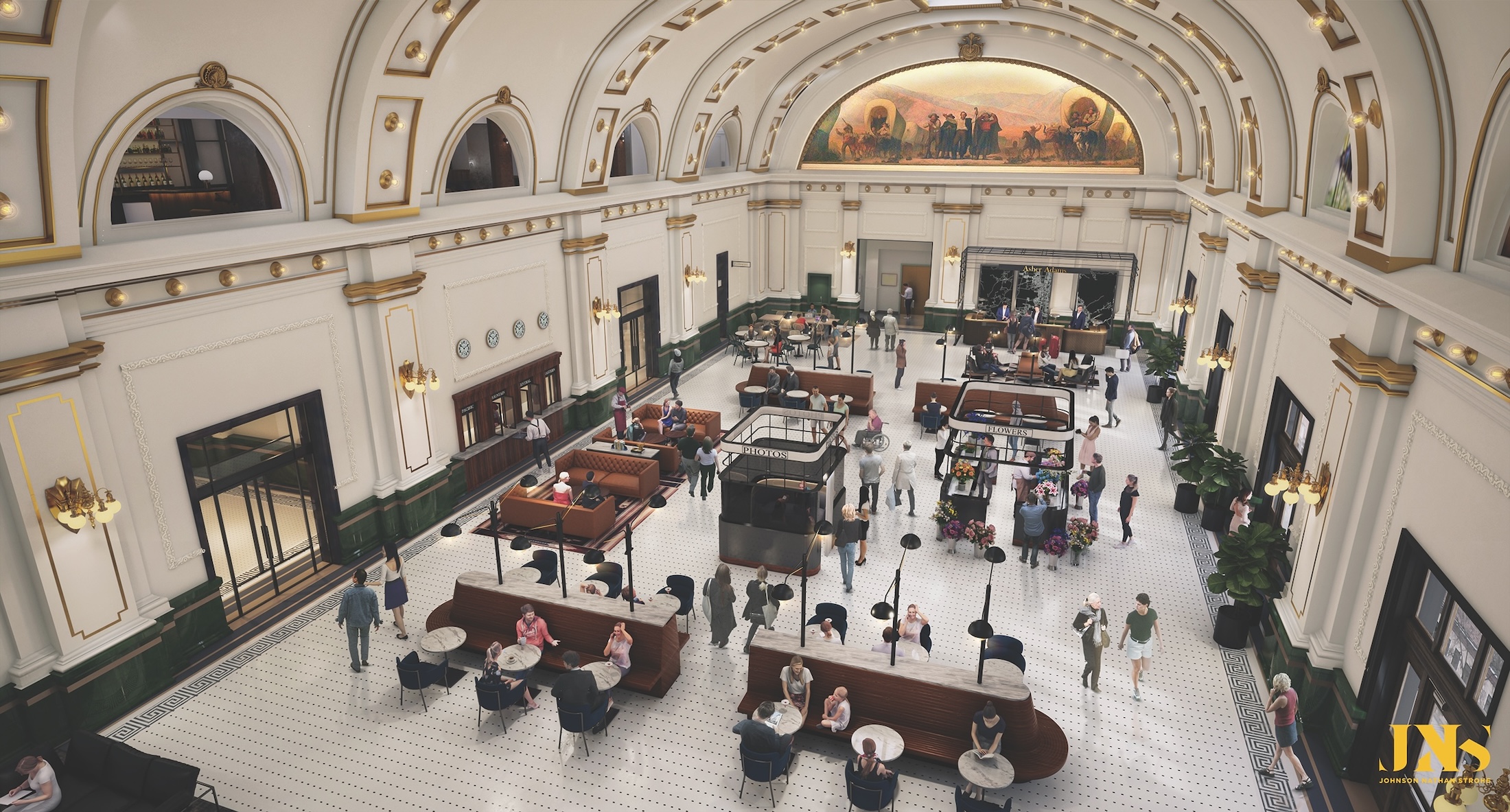
Utah Business reported that The Athens Group is converting the train depot into 13 historic guest suites, and constructing an entirely new building with 212 modern suites. The hotel will include a 1,500-sf fitness center, 9,000 sf of meeting space, and 3,200 sf of open-air gathering space.
The Asher Adams hotel, as completed, will be attached to The Depot, a 17,000-sf live entertainment and event venue that is also connected to the Delta Center arena, home to the Utah Jazz NBA franchise. The hotel will be located near the city’s Olympic Plaza on the northside of The Gateway, a popular open-air retail, residential, and office complex. The Gateway offers 650,000 sf of dining, entertainment, shopping, and special-events space. The Gateway first opened in November 2001, and since 2016 has been owned by Vestar, a Phoenix-based real estate developer that specializes in shopping centers.
On February 15, The Larry H. Miller Company said it would invest $3.5 billion into the Power District, a historical development in Salt Lake City. The company’s new renderings of this 100-acre project include images of a stadium (the Miller family has long expressed an interest in bringing major league baseball to Salt Lake City). The company is working with Sasaki on the Power District, according to the Salt Lake Tribune newspaper.
Related Stories
Multifamily Housing | Feb 10, 2023
Dallas to get a 19-story, 351-unit residential high-rise
In Dallas, work has begun on a new multifamily high-rise called The Oliver. The 19-story, 351-unit apartment building will be located within The Central, a 27-acre mixed-use development near the Knox/Henderson neighborhood north of downtown Dallas.
Mixed-Use | Dec 7, 2022
Bjarke Ingels’ first design project in South America is poised to open next year in Ecuador
In 2013, Quito, Ecuador’s capital, opened its new airport, which had been relocated from the metro’s center to an agricultural site 12 miles northeast of the city. Since then, Quito’s skyline has been reshaped by new, vertical structures that include the 24-story mixed-use EPIQ Residences, designed in the shape of a quarter circle by Bjarke Ingels Group (BIG).
High-rise Construction | Dec 7, 2022
SOM reveals its design for Singapore’s tallest skyscraper
Skidmore, Owings & Merrill (SOM) has revealed its design for 8 Shenton Way—a mixed-use tower that will stand 63 stories and 305 meters (1,000 feet) high, becoming Singapore’s tallest skyscraper. The design team also plans to make the building one of Asia’s most sustainable skyscrapers. The tower incorporates post-pandemic design features.
Office Buildings | Dec 6, 2022
‘Chicago’s healthiest office tower’ achieves LEED Gold, WELL Platinum, and WiredScore Platinum
Goettsch Partners (GP) recently completed 320 South Canal, billed as “Chicago’s healthiest office tower,” according to the architecture firm. Located across the street from Chicago Union Station and close to major expressways, the 51-story tower totals 1,740,000 sf. It includes a conference center, fitness center, restaurant, to-go market, branch bank, and a cocktail lounge in an adjacent structure, as well as parking for 324 cars/electric vehicles and 114 bicycles.
Mixed-Use | Dec 6, 2022
Houston developer plans to convert Kevin Roche-designed ConocoPhillips HQ to mixed-use destination
Houston-based Midway, a real estate investment, development, and management firm, plans to redevelop the former ConocoPhillips corporate headquarters site into a mixed-use destination called Watermark District at Woodcreek.
Data Centers | Nov 28, 2022
Data centers are a hot market—don't waste the heat!
SmithGroup's Brian Rener shares a few ways to integrate data centers in mixed-use sites, utilizing waste heat to optimize the energy demands of the buildings.
Mixed-Use | Oct 20, 2022
ROI on resilient multifamily construction can be as high as 72%
A new study that measured the economic value of using FORTIFIED Multifamily, a voluntary beyond-code construction and re-roofing method developed by the Insurance Institute for Business & Home Safety (IBHS), found the return can be as high as 72%.
Mixed-Use | Oct 18, 2022
Mixed-use San Diego tower inspired by coastal experience and luxury travel
The new 525 Olive mixed use San Diego tower was inspired by the coastal experience and luxury travel.
Multifamily Housing | Oct 7, 2022
Design for new Ft. Lauderdale mixed-use tower features sequence of stepped rounded volumes
The newly revealed design for 633 SE 3rd Ave., a 47-story, mixed-use tower in Ft. Lauderdale, features a sequence of stepped rounded volumes that ease the massing of the tower as it rises.
Sports and Recreational Facilities | Sep 8, 2022
Chicago Bears unveil preliminary master plan for suburban stadium district
As the 2022 NFL season kicks off, the league’s original franchise is fortifying plans to leave its landmark lakefront stadium for a multi-billion-dollar mixed-use stadium district in northwest suburban Arlington Heights.


